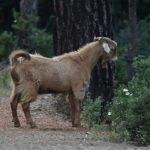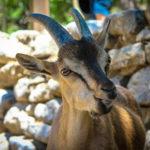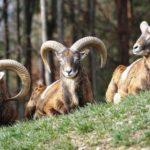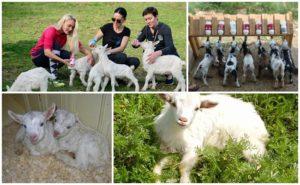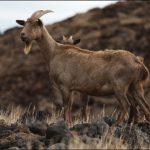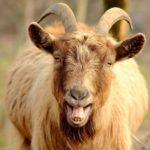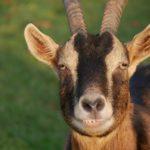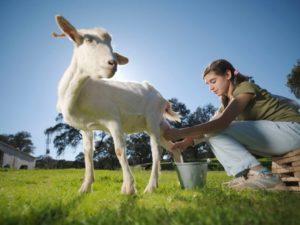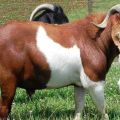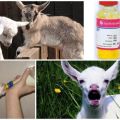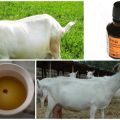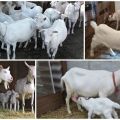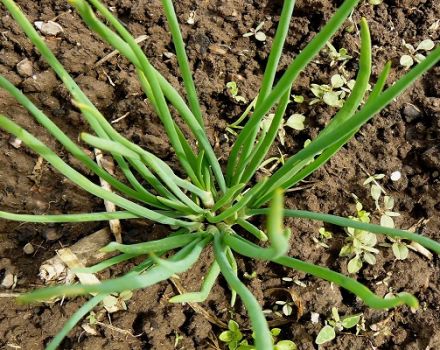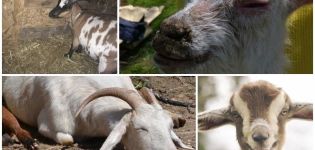Description and behavior of wild goats, where they live and their way of life
The popular name for wild goats living in Europe, Siberia, the Far East, and the Caucasus is roe deer. These small, beautiful, graceful and graceful animals are one of the most famous representatives of European deer. Roe deer inhabit mixed and deciduous forests, forest-steppe. Hunting for these gullible artiodactyls is popular, and therefore the number of wild goats is constantly decreasing.
Description of wild goats
In some areas of European roe deer from the genus of deer (Capreólus capreólus) they are called roe deer, chamois, sanads (males - agrimi). Animals have a slender physique, a long neck, thin and long legs. Body length - 100-125 centimeters, height at the withers - 65-80 centimeters. The weight of males is about 25-30 kilograms. Females are slightly smaller in size and weight. The anatomical differences between them are weak.
Twice-branching small, up to 30 centimeters, only males have horns with three processes at the top. The growth of horns in goats begins at 4 months of age, their full formation ends when the animal turns 3 years old. They are annually discarded in late autumn and early winter, and by May they are restored again.
Summer color of goats is dark red (head is gray with a reddish tinge). In winter, it changes to gray or gray-brown. Kids up to three months old have a masking spotted color and practically do not smell. Molting occurs twice a year - in late spring and early autumn. The specific dates depend on the climatic conditions of the region of residence.
The slender legs of wild goats end in small hooves. The support in them falls on two fingers, two more - hanging, rudimentary. The European forest roe deer, on average, lives 15-16 years, some individuals live up to 20 years or more.
Some scientists distinguish the Siberian roe deer (Capreolns pygargus) as a separate subspecies, which lives in Asia and is distinguished by its larger size. These animals weigh up to 59 kilograms and reach a meter in height at the withers. This species of wild goats lives not only in Siberia, but also in the Far East, on the territory of Kazakhstan, Mongolia, China, acclimatized in the Volga and Ciscaucasia.
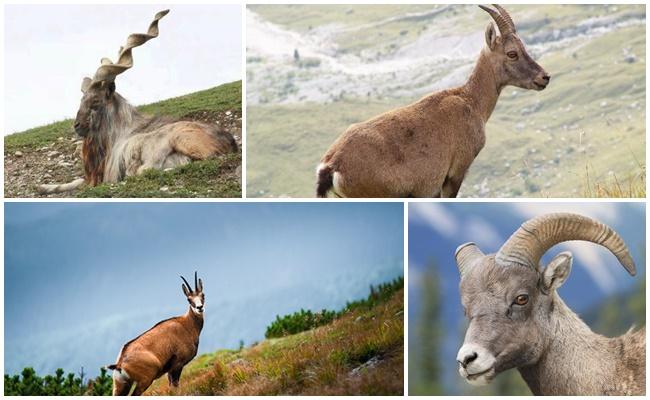
Features in behavior
Wild goats are agile and graceful in movement, jump easily - 5 meters in length and more than 2 meters in height, they can swim. The animal has excellent hearing and sensitivity, but at the same time it is very trusting and fearful. Fear can literally paralyze a wild goat, so even adults easily fall prey to predators. If one of the roe deer senses danger and takes a pose of alarm, the rest are also alarmed, huddling together.
Adults can run fast, at speeds of up to 60 kilometers per hour, but over short distances: in an open area, a wild goat runs 300-400 meters, in the thicket of the forest - no more than 100 meters. After that, the animal begins to dodge, confusing its pursuers. In uncrowded places, without fear of people, roe deer allow them to come within a distance of less than 20 meters.
In spring and summer, goats are more active at dusk and at night, in winter - in the morning. From the beginning of spring to autumn, males rub their horns against branches and trunks of trees and bushes. Thus, they mark territory, warning potential rivals.
Sound signals emitted by animals are also very informative:
- stamping feet, whistling express concern;
- with strong excitement, roe deer emit a hiss;
- with anxiety - a semblance of barking;
- caught goats squeal.
It is difficult for roe deer to walk on the snow cover, so in winter they often use the trails of other animals or hunters. They slide on the ice.
Where dwell
Wild goats live in mixed or deciduous forests, in deciduous undergrowth of coniferous forests, in the forest-steppe. More often they prefer edges overgrown with bushes, floodplains of reservoirs, gullies, glades with sparse undergrowth. At the same time, too open spaces are avoided, since they need shelter from the weather and enemies. These animals have perfectly adapted to living next to humans, they can often be found in bushes next to agricultural land. They usually live in one place and migrate very rarely - if the snow cover is too high in winter.

Chamois nutrition and lifestyle
The diet of roe deer includes up to 900 plant species. It mainly consists of young shoots of deciduous trees, foliage, buds of conifers, various grasses and unripe cereals, nuts, acorns. Goats eat little by little, but often - 5-10 times a day, eating 1.5-4 kilograms of greens during this time. In the presence of a reservoir, they regularly visit it, and in the absence, they are content with rainwater or dew drops on the leaves.
Males during the growth of horns, and females during pregnancy need mineral salts and try to find salt licks.
These animals can make forays into gardens, especially when they taste apples. They practically do not harm vegetable gardens, but in the fall they prefer clover sown for seeds, rape seedlings and especially grain crops. Wild goats are generally solitary. Groups are formed in the event of a shortage of males or in winter, when it is easier for several families to survive together. In the forest area, up to 15 individuals get lost in the herd, in the forest-steppe - twice as many. For most of the year, adult females keep in small family herds, and males singly. Goat and goat days are usually spent in shelters. Lairs are made in the thicket of the forest or in high loaves, tearing sod or moss with their front legs.
Reproduction
The mating season in wild goats is called rutting. In European individuals, it lasts from July to mid-August, in Siberian individuals - until September. Males at this time become very excited, enter into fights, which often end in wounds. The gestation period for wild goats is almost 9 months. The first calf usually gives birth to one cub, then two or three. Mothers in the first days do not leave the kids, protecting them, then the young themselves follow them. The first few months of roe deer spend most of their time in shelters, while the mother feeds and rests nearby. Babies stay with the goats until the next estrus period.
An interesting fact: roe deer are the only ones among reindeer who can "slow down" their own pregnancy if mating occurs too early. So that the newborn kids do not die in winter, the embryo temporarily does not develop, being born only by the beginning of next summer.
Dangers and enemies
The most dangerous natural enemies for Siberian roe deer are wolves, bears, lynxes, and in the Central European part - foxes and stray dogs. Most often, old or wounded animals, small kids, become their prey. Owls can also hunt babies.
A special category of enemies of wild goats is some species of flies, the larvae of which develop on the mucous membrane of the nasal cavity or under the skin of the animal, giving it constant suffering. Roe deer are an object of commercial and sport hunting, often prey to poachers. In some regions, they are listed in the Red Book as an endangered species.
